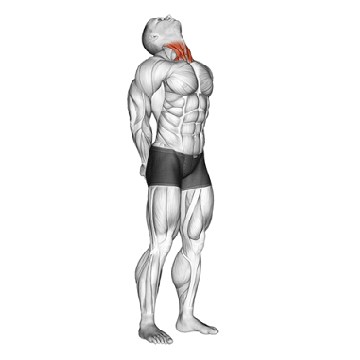When it comes to fitness, the neck is often overlooked, even though it plays a crucial role in posture, stability and injury prevention. Strengthening your neck muscles can improve your overall fitness and athletic performance and a Neck harness (also called a neck strap or head strap) is one of the most effective tools for this task.
Are you ready to take your neck training to the next level? This article will walk you through three essential exercises for building a strong, balanced neck and give you tips on preparation, safety, and who can benefit most from incorporating these moves into their routine.
Why use a neck harness?
A neck strap is specifically designed to exercise the muscles in your neck and help:
- Improve neck muscles and neck strength.
- Improve posture, especially for desk workers or people with forward-facing heads.
- Prevent injuries during contact sports and other high-impact activities.
This simple yet effective device offers versatility, allowing you to train your neck from different angles for balanced muscle building.
Who Should Do Weighted Neck Strap Exercises?
The weighted neck strap is a versatile tool suitable for a variety of individuals looking to improve their fitness, athletic performance or recovery.
- Experienced athletes You want to improve your performance and resilience in high-performance sports.
- Bodybuilder I want to build a thicker, more defined neck for a balanced physique.
- Fitness enthusiasts with the goal of overcoming plateaus and taking your training to the next level.
- People recovering from neck injuries: Always consult a doctor or physical therapist before incorporating weight-bearing exercises into your rehabilitation routine.
Warm up before you begin
Before you begin weight-bearing exercises, a warm-up is essential to prevent injury and prepare your neck muscles for the strain. Perform the following warm-up routine:



- Neck rotations: Slowly rotate your neck in a circular motion, 10-15 reps in each direction.
- Neck tilts: Move your head forward, back and side to side. Perform 2-3 sets of 10-15 reps.
This warm-up increases blood flow, loosens tight muscles, and prepares your neck for more intense activities.
3 weighted neck strap exercises
1. Flexion of the neck strap

Advantages
- Aim at the anterior neck musclesincluding the Sternocleidomastoid And Scala muscleswhich play a key role in flexing and stabilizing the neck.
- Improves neck mobility and helps counteract forward head posture caused by desk work or screen time.
Implementation
- Set up your equipment
- Use a neck strap designed for weight lifting.
- Attach a light weight plate to the harness chain and ensure it is securely attached.
- Prepare the bench
- Adapt a training bench to a 45 degree tilt.
- Sit on the bench and lean back so that your upper back is supported and your head extends over the edge of the bench.
- Starting position
- Attach the neck strap to your head and ensure a snug fit.
- Allow your head to hang back slightly in a neutral position.
- Execute the movement
- Slow Bend your neck forwardBring your chin to your chest in a controlled movement.
- Pause at the top of the movement to fully tense the neck muscles.
- Gradually return to the starting position, resisting the weight as you lower your head.
- Repetitions
- Carry out 2-4 sets of 8-15 reps. Gradually increase the weight as your strength improves.
2. Neck strap extension

Advantages
- Strengthens it posterior neck musclesincluding the Trapezius, full headAnd semi-spinal head.
- Improves neck stability, improves posture and reduces the risk of neck injuries during sports and daily activities.
Implementation
- Get into position
- lie hidden on the bench with your chest and stomach supported.
- Allow your head to extend over the top of the bench.
- Starting position
- Attach the weight to the strap and carry it safely.
- Allow your head to fall slightly forward for a gentle stretch.
- Execute the movement
- Slow Stretch your neckRaise your head until it is in line with your upper back.
- Pause for 1-2 seconds to fully engage the muscles.
- Gradually lower your head back to the starting position while maintaining control.
- Repetitions
- Carry out 2-4 sets of 8-15 repsand adjust the weight as needed.
3. Lateral flexion of the neck strap

Advantages
- Activates the lateral neck musclesas the Levator scapulae And Sternocleidomastoidwhich improves lateral mobility and balance.
- Useful for contact sports athletes to improve neck stability during impacts.
Implementation
- Starting position
- Securely attach the head strap to your head and attach a weight plate.
- lie on your side on an incline bench with your head extending above the bench.
- Allow the weight to hang naturally, creating a slight stretch on the opposite side of your neck.
- Execute the movement
- Breathe out like you do Bend your neck sidewaysRaise your head slowly and controlled towards your shoulder.
- Hold the top position for 1-2 seconds.
- Inhale as you lower your head back to the starting position.
- Repetitions
- Carry out 2-4 sets of 8-15 reps on each side for balanced development.
Important safety tips
- Start light: Start with a manageable weight to master the form and avoid straining your neck.
- Focus on the shape: Keep movements slow and controlled to engage the right muscles and avoid injury.
- Avoid overtraining: Give yourself 48 hours of rest between neck exercises to allow the muscles to recover.
- Listen to your body: If you experience any discomfort or pain, stop immediately and re-evaluate your technique or weight.
Final thoughts
Strengthening your neck muscles with a neck strap can provide significant benefits, from improved posture to increased athletic performance. By incorporating these three exercises and following safety guidelines, you will develop a stronger, more stable neck that supports your overall fitness goals.





